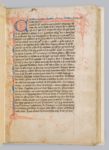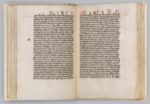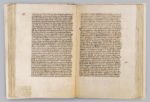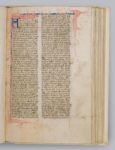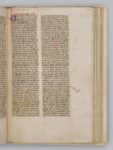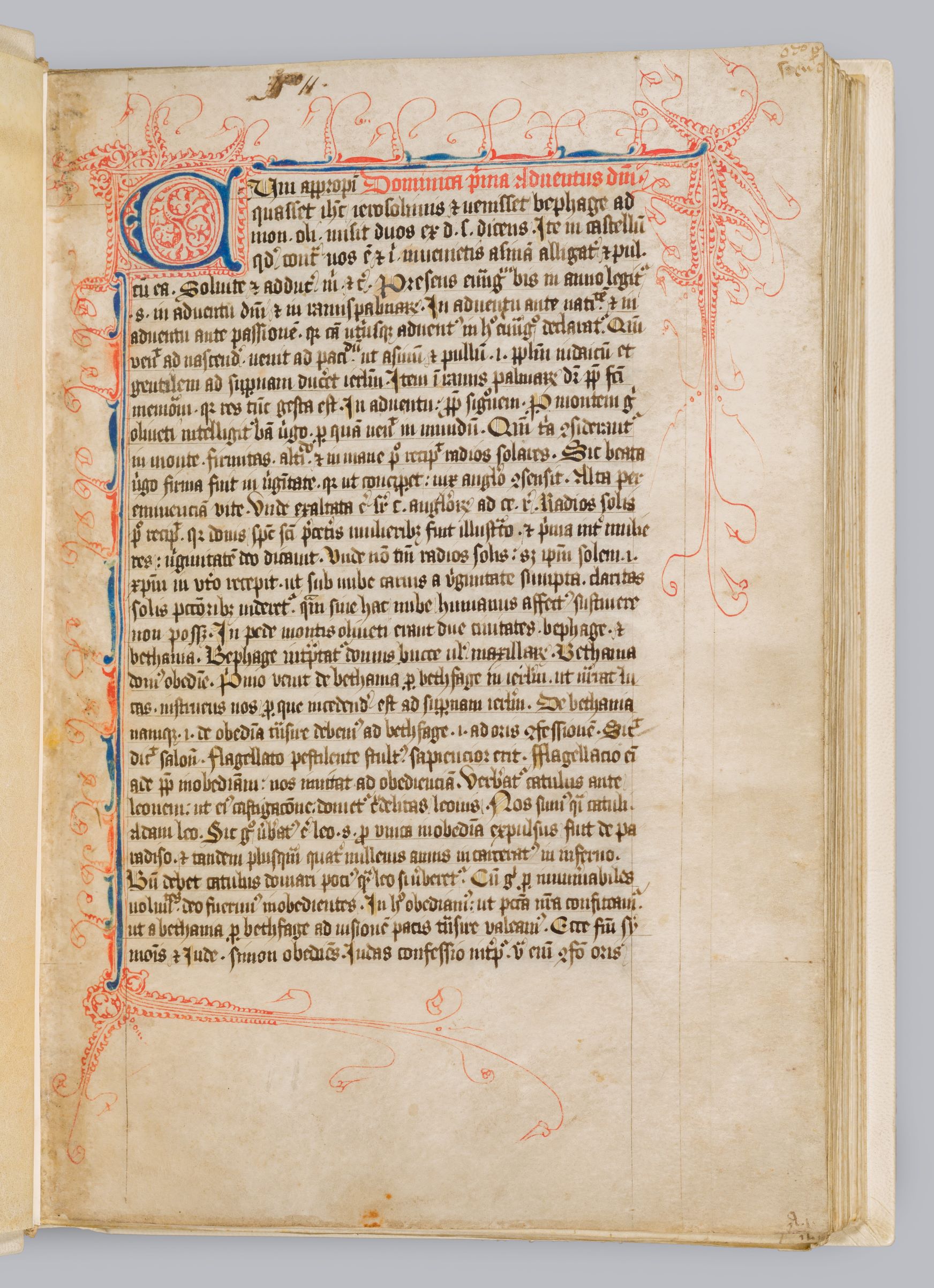
Odo of Cheriton, Sermones, mid-15th century [MS11]
England
Manuscript on vellum, ff. ii+264+iii. Bound in white alum-tawed goatskin over pasteboard by Roger Powell, 1955 (28.5 x 19.7 cm)
Odo of Cheriton (d. 1247) was an English preacher and fabulist from Kent, who studied at the University of Paris before lecturing in southern France and northern Spain. This manuscript is a collection of Odo’s sermons presented in two parts. The first (fols 1–191r) contains his Sermons for the Sunday Gospels, completed in 1219. The second (fols 194–265v) is a collection of twenty-five sermons on the gospels for the Transfiguration (2), Exaltation and Invention of the Cross, Annunciation, Assumption and Nativity of the Virgin Mary, Saints Michael, John the Baptist, Peter and Paul, Mary Magdalene, All Saints (2), Common of saints (9), dedication of the Church, and Pro fidelibus defunctis (‘for the faithful departed’)(2).
While the two parts were copied by different scribes and in a different format, the same rubricator has decorated both with red and blue initials, some of which extend into the margins in the form of elaborate penwork. The initials are similar to a copy of the College Statutes dated 1423 and owned by Robert Heete (d. 1432/33), one of the first notaries of Winchester College. Furthermore, the manuscript’s flourishing is in the same hand as that of MS 17, which was made under the direction of a former Second Master of the College, Richard Julyan. This indicates that the rubricator was based in Winchester, and was probably a parish clerk called John Colman, who is known to have worked on MS17.
On certain leaves in the first part of the manuscript, the top line ascenders are decorated with cadels. The text of the second collection of sermons is less elaborate and is accompanied by more marginalia, many of them in the form of spotted red manicules (hands) that point towards important parts of the text.
Near the middle of the manuscript (on the bottom left corner of fol. 114v) is preserved a note in Middle English written by the scribe. It reads:
Lord god be Þanked I haue brouȜt to ende Þt I made couenaunt wt Ȝow of. bt Ȝe haue not so to me for Ȝe neuer sey to me siÞthe [sic] y biganne Ȝour booke wt no refreschginge and treweli me ÞinkiÞ Þt I haue deseruid ryȜt good rewarde of Ȝou for I haue writen Ȝour booke bi a trewe copi. for Ȝuor book Þt Ȝe sende for a copy is Þe most defectyuest copy Þt ony man may write by. 7 Þt is schame for Ȝou Þt Ȝe let it not be correctid sithen ….
Which translates as:
Lord god be thanked that I have brought to an end that [task] which I am bound to you by, but you have not [done the same] to me because you never spoke to me since I began your book [which I worked on] with no relief, and truly I think that I have desired a very good reward from you because I have written your book from a true copy. For your book that you sent to be copied is the most defective copy that any man could write from. And that is a shame for you that you have not let it be corrected since…
The leaf that follows shows an unmistakable change of hand.
Literature: Walter Oakeshott, ‘Winchester College Library Before 1750’, The Library, vol. IX. no. 1 (1954), pp. 1–16, 15, n.1; Neil R. Ker and Alan J. Piper, Medieval Manuscripts in British Libraries, Volume IV: Paisley–York (Oxford, 1969), pp. 609–10; Paul Yeats-Edwards, Winchester College (Warden and Fellows’ Library) Medieval Manuscript Collection: Brief History and Catalogue (London, 1978), p. 4; James M. W. Willoughby, The Libraries of Collegiate Churches, Vol. 2 (London, 2013), pp. 614–15, 617, 692, 707–08.
Provenance: Given to Winchester College, and possibly commissioned, by John Wale (d. 1431), Second Master, 1425–31.
Location: Fellows’ Library
